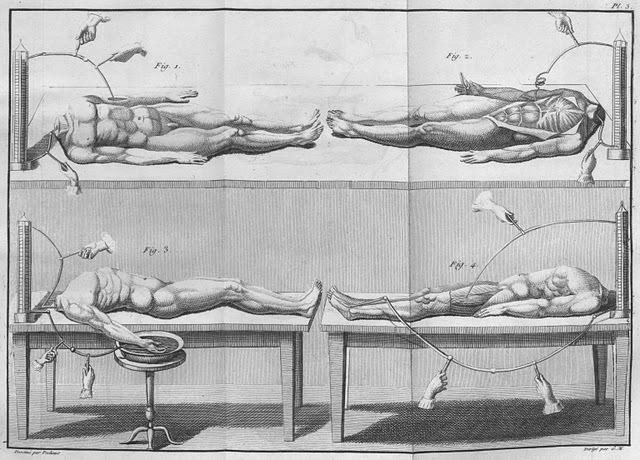The Federal Communications Commission has established service rules for the world’s first spectrum allocation for Medical Body Area Networks. The agency also announced it is seeking commentary on the selection of an MBAN coordinator to maintain a database of transmitter locations and operational information.
Medical radio devices in the United States have previously operated on a variety of frequencies on an unlicensed basis. The FCC order makes the United States the first nation to allocate spectrum specifically for MBANs. The MBAN spectrum allocation will create significant opportunities to develop new wireless medical devices to address what has been projected to be a $2 billion to $6 billion industry by 2015.
MBAN technology uses body sensors that capture clinical information (such as temperature and respiratory function) and relay it to a hub located elsewhere for monitoring and analysis, providing patients with greater mobility and a higher level of care.
“This is an extraordinarily helpful new technology and could be an improvement on the existing wireless technology,” said John Dale Dunn, M.D., J.D., a policy advisor for The Heartland Institute, which publishes InfoTech & Telecom News. “This is a great idea. These systems [using the spectrum] allow remote tracking of people with serious medical problems and those who are disabled.”
Flexible Wireless Network Platform
In its May 24 First Report and Order, the FCC stated MBAN technology can revolutionize the health-care industry by reducing the cost and increasing the effectiveness of patient monitoring and treatment in hospitals, clinics, and in the home.
The FCC’s order states, “The MBAN technology will provide a flexible platform for the wireless networking of multiple body transmitters used for the purpose of measuring and recording physiological parameters and other patient information or for performing diagnostic or therapeutic functions, primarily in health care facilities.”
The document continues, “This platform will enhance patient safety, care and comfort by reducing the need to physically connect sensors to essential monitoring equipment by cables and wires. Our decision herein is the latest in a series of actions to expand the spectrum available for wireless medical use.”
The new rules allocate a band of 40 MHz of spectrum between 2360 MHz and 2400 MHz to wireless medical devices on a secondary, noninterference basis, by allowing compatible users to share the band. The MBAN service rules expand the FCC’s Medical Device Radiocommunication Service rules and include technical requirements, mandatory disclosure policies, and device labeling requirements.
‘Reasonable Chunk of Spectrum’
“Forty Mhz is a reasonable chunk of spectrum and should be sufficient for most conceivable applications,” said Peter Stanforth, the chief technology officer of Spectrum Bridge, Inc., a wireless technology consulting company in Lake Mary, Florida. “The fact that this spectrum is right below the current ISM [industrial, scientific, and medical] band means that for manufacturers to develop solutions should be as simple as rebinding Bluetooth or wi-fi. So for all those reasons it is a good move,” he said.
“One advantage of using the current ISM band for medical telemetry is that a wi-fi or Bluetooth medical device can talk to a smart phone, tablet, or laptop that somebody may already own, which seems to be a huge business advantage,” Stanforth said. “For low-bandwidth and short-range applications, I wonder if manufacturers will continue to use the ISM bands for this reason.”
Stanforth says that he doesn’t expect the spectrum sharing to create interference issues. “These MBAN devices will be very low power, probably almost always used indoors where the chance of them interfering with avionics testing will be highly unlikely,” he said. “I am not an avionics expert, but I do not believe that they use 2.3GHz for commercial operation, so I cannot see an issue if someone was to walk onto a plane wearing some of these devices.”
Details of Proposed Rules
An individual license is not required to operate a MBAN device. The new spectrum is allocated on a secondary basis to the existing primary users, which imposes some limitations on its use.
Health care facilities will be required to register all MBAN devices they propose to operate in the 2360 MHz to 2390 MHz band with a frequency coordinator prior to commencing operation. All MBAN devices using the 2360 MHz to 2390 MHz band will be limited to indoor operation within a health care facility registered with the MBAN coordinator. MBAN devices that operate within the 2390 MHz to 2400 MHz band will not be subject to registration and coordination, and may be used in any location, including residential settings.
Dunn says MBAN technologies not only improve the quality of health care but also provide efficiencies that could reduce health-care costs.
“When it comes to care of our patients, it’s nice to know we have the tools necessary and that government regulations aren’t throwing up roadblocks,” he said. “And it’s nice to know that private industry can provide devices that make these new tools cost-effective for patients and their physicians.”
Phil Britt ([email protected]) writes from South Holland, Illinois.
Internet Info
“Medical Body Area Networks First Report and Order,” Federal Communications Commission Document, May 24, 2012: http://www.fcc.gov/document/medical-body-area-networks-first-report-and-order
“Medical Device Radiocommunication Service Memorandum Opinion and Order,” Federal Communications Commission Document, July 26, 2010: http://www.fcc.gov/document/medical-device-radiocommunication-service-0




